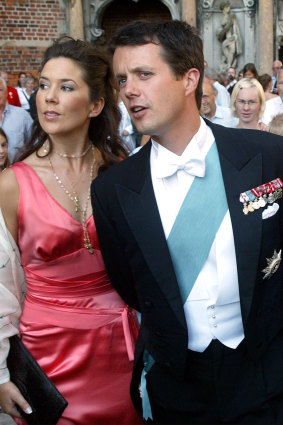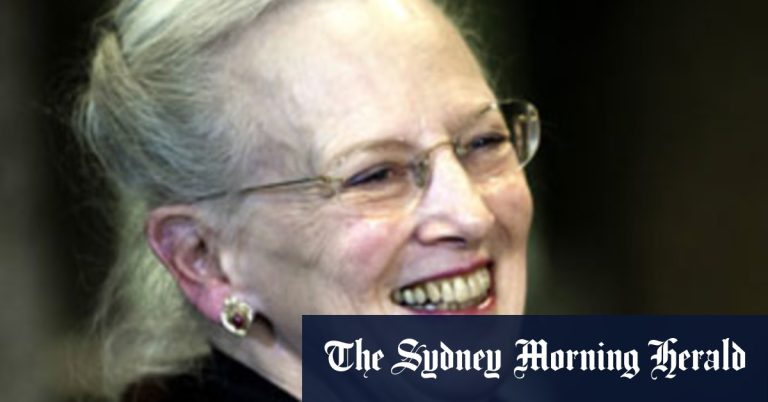In 2022, she stripped four of her grandchildren of their royal titles in a simplistic move, sparking what she admitted was a “strong reaction.” During her ailing husband's final years, he complained publicly about his role.
Part of the Queen's appeal came from her many talents.
She is fluent in Danish, German, English, French and Swedish. Her work as an artist included paintings, book illustrations, theatrical costume designs, and church textiles. Her work has been shown in more than 50 museums from Tokyo to Washington.
In 1981, under a pseudonym, she translated a book into Danish by the French philosopher and feminist activist Simone de Beauvoir, All men are human.
Although Margaret was the first woman to rule Denmark in 560 years, she refused to promote gender equality publicly, much to the disappointment of some members of Danish women's rights groups.

Danish Crown Prince Frederik and his Australian-born wife, Crown Princess Mary, will soon become king and queen of the country.credit: AP
“I would rather not be involved in any movement,” she said during a trip to the United States in 1976, when gender issues were high on the agenda in her homeland. “I sympathize with her, but my job is to be queen, and that requires all my abilities and strength.”
Margaret was born on April 16, 1940, the first of three daughters of King Frederick IX and Queen Ingrid. Her birth came at the Royal Palace in Copenhagen a week after Nazi Germany attacked and occupied Denmark.
At that time, she was not eligible to become head of state, because the constitution only allowed male succession. This meant the transfer of ownership to her uncle Knud.
But popular sentiment was behind the bright young princess. A constitutional referendum was held in 1953 that paved the way for female succession if the royal couple had no children. In 2009, the succession law was changed again to give firstborns the right to the throne, regardless of gender.
download
In the period 1960-1965, Crown Princess Margaret studied at the University of Copenhagen, the University of Cambridge, the London School of Economics, and the Sorbonne, completing courses in archaeology and political science.
Margaret said that if she had not been royal, she would have been torn between becoming an archaeologist or an artist.
“I'm lucky that I never had to face that dilemma because I knew what my calling was, but then I discovered that I could still pursue the arts and also, to some extent, archaeology,” the Queen said in the 2011 interview book. MBy author Jens Andersen.
In 1967, she married Henri Marie Jean André, a French count who grew up in Vietnam. He took the Danish name Prince Consort Henrik. They had two sons: Crown Prince Frederik in 1968 and Prince Joachim the following year.
She ascended the throne in 1972 after her father's death and balanced her work as an artist with her royal duties.
Margaret faced her greatest public crisis in the final years of her marriage, as Henrik repeatedly complained about his role and said he should have been given the title of king.
In 2017, he said he did not want to be buried with his wife in Roskilde Cathedral, as had been planned. Later that year, the royal court issued a statement saying that the prince was suffering from dementia.
When he died in 2018, at the age of 83, Henrik's body was cremated, and part of his ashes were placed in the garden of a royal castle near Copenhagen. The other part was deployed in Danish waters as he wished.
The move to strip the children of Margaret's youngest son of titles came after similar reductions in other royal houses, such as in Sweden. A week after the announcement, Margaret apologized to her family but stood by her decision, saying it was “in keeping with the times” and necessary to “future-proof the institution,” according to the royal court.
download
“I made up my mind as a queen, a mother and a grandmother, but as a mother and grandmother, I underestimated how much my youngest son and his family would be affected,” she said in a written statement at the time. “This makes a big impression, and I'm sorry about that.”
Bloomberg

